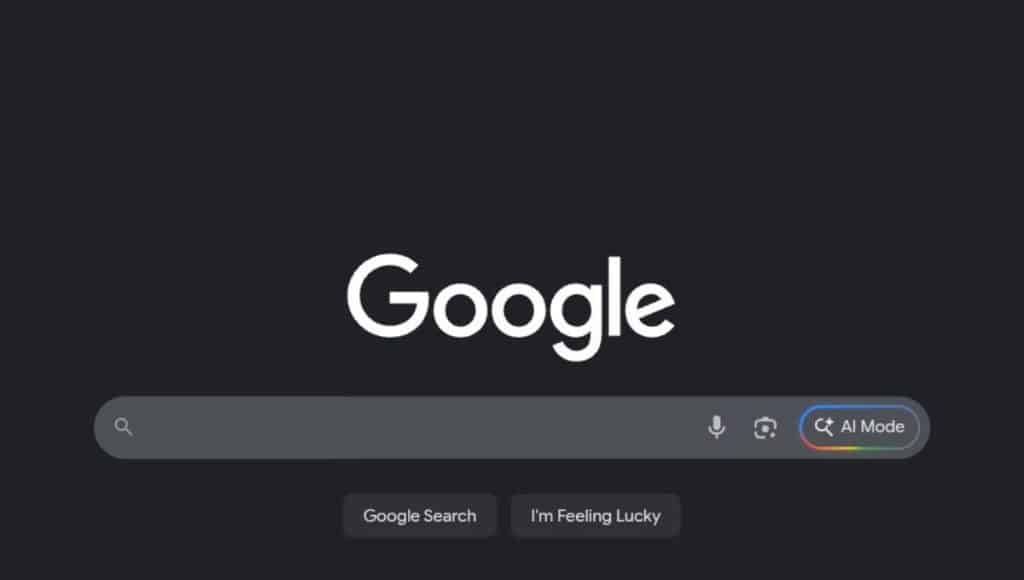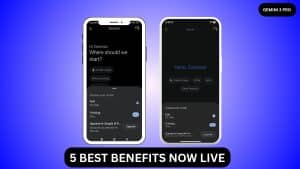Are you looking at your Google Analytics 4 (GA4) Referral Traffic reports and wondering if the new ‘Google AI Mode’ traffic is showing up separately? Or is this traffic entry skewing your data?
In the age of AI Overviews and Generative Engine Optimization (GEO), correctly tracking traffic is a critical challenge.
We will give you a direct answer and, most importantly, show you how to fix your GA4 data for accurate reporting.
For Full Details on how Google’s Search AI uses your personal data, Full Details

Table of contents
1. Quick Answer: Does GA4 Show Google AI Mode as a Referrer?
The Direct Answer:
No, GA4 does not currently display Google AI Mode as a distinct or separate referrer.
Traffic generated from AI-based results is typically included in your Organic Search traffic and, in some cases, may appear as Direct traffic.
The inability to see AI traffic separately presents a significant data challenge for marketers reliant on accurate source tracking.
2. What Exactly is ‘Google AI Mode’ in Analytics?
“Google AI Mode” refers to the traffic originating from AI Overviews (also known as Generative AI Summaries) that appear on the Google Search Result Page (SERP).
These summaries provide a direct answer to the user’s query, often appearing prominently alongside or above the standard organic listings.
For digital marketers, the inability to separate this traffic creates confusion because:
- ROI Tracking is Difficult: It becomes challenging to determine if a click came from a conventional organic search result or from the AI overview box.
- GEO Strategy is Blurry: You cannot accurately assess the return on investment (ROI) of your efforts aimed at being featured in the new Generative Engine Optimization (GEO) sections.
3. Why ‘Google AI Mode’ Traffic Is Unlabeled (The Root Cause)
The main reason why GA4 fails to attribute this traffic separately is a combination of Google’s protocol and a confirmed issue:
- The ‘Non-Referrer’ Attribute: Links embedded within Google AI Mode results often carry a non-referrer attribute. This attribute actively cloaks the referral data, making Google Analytics incapable of differentiating the click source, thus grouping it with the broad Organic Search category.
- It’s a Known Bug: Google has publicly acknowledged that the lack of clear labeling for this traffic is a bug. The company is actively working to resolve this issue, and a separate label for AI Mode referrals is expected in a future GA4 update.
4. How to Monitor AI Traffic in GA4 (The Fix)
While we wait for Google to fix the bug, you can use manual methods to successfully monitor and consolidate traffic coming from other AI platforms (like ChatGPT, Perplexity, and Gemini).
A. Leveraging Regex Filters in Explore Reports
The most effective way to analyze various AI sources is by using a Regular Expression (Regex) filter in your Exploration reports:
- Go to the Explore tab in GA4 and create a Blank Exploration report.
- Add the Session source/medium dimension.
- Apply a Regex filter to consolidate all major AI platforms into one view:
- Example Regex: (chatgpt.com|gemini.google.com|openai.com|copilot.microsoft.com|perplexity.ai|claude.ai|bard.google.com|bing.com/chat).
B. Establish Custom Channel Grouping
For better visibility in your main Traffic Acquisition Report, create a Custom Channel Group:
- Navigate to the Admin section, then Data Display, and select Channel Groups.
- Create a copy of your default channel groups.
- Establish a new channel named “AI Traffic”.
- Define this new channel using the same Regex conditions mentioned above, including all known AI sources.
- Crucially, place the “AI Traffic” channel above the “Referral” channel to ensure correct attribution.
C. Use UTM Parameters
If your links are appearing in direct AI summaries or chatbot answers, using UTM parameters is the best way to force correct attribution:
- By adding UTM tags to the links you promote in these environments, GA4 will attribute the clicks to your custom source and medium, overriding the generic Organic/Direct grouping.
- Example UTM for Google Gemini: ?utm_source=gemini&utm_medium=ai_search&utm_campaign=brand_awareness.
5. Final Thoughts: Keeping Your GA4 Data Clean
The current answer to “Does GA4 Show Google AI Mode as a Referrer?” is No, primarily due to the non-referrer attribute and a known Google bug.
However, tracking AI-driven traffic is essential for modern SEO. By implementing Custom Channel Grouping, Regex filters, and strategic UTM tagging, you can maintain clean, ROI-accurate data that separates true organic clicks from the emerging AI landscape.
Stay vigilant for Google’s official fix, which is expected to provide a dedicated label for these AI referrals soon.
Frequently Asked Questions
1. How to see AI referral traffic in GA4?
You cannot see Google’s AI Overview traffic as a distinct referrer yet, as it’s grouped under Organic Search. However, you can see referrals from other platforms (like ChatGPT, Gemini, and Perplexity) by setting up Custom Channel Grouping or using Regex Filters in your GA4 Exploration reports.
2. How to track Google AI mode?
Since Google AI Mode traffic often loses its referral data due to a non-referrer attribute, the best way to track it is indirectly:
- Use UTM Parameters on links placed in known AI summary boxes.
- Filter for specific AI domains (like gemini.google.com) in GA4 using Regex in your Exploration reports.
3. What is the referrer in GA4?
In GA4, the referrer is the source (website, search engine, social platform, etc.) that a user was on immediately before clicking the link to visit your website.
It is used to attribute traffic and understand where your visitors are coming from. The referrer is a key dimension in the Traffic Acquisition Report.
4. Does GA4 use AI?
Yes, absolutely. GA4 is built on an AI-first model. It uses Machine Learning and Artificial Intelligence for several key functions, including:
- Behavioral Modeling: To fill data gaps caused by cookie consent issues.
- Predictive Metrics: To forecast future user behavior, such as purchase probability and churn likelihood.
- Insights: To automatically detect unusual changes or trends in your data.
Hello! I am Zeeshan Salam, an Web Developer & On-Page SEO Specialist with over 3 years of hands-on experience in optimizing digital content for maximum search visibility. My expertise lies in improving website rankings and driving organic traffic. My goal is to share high-value Tech News, detailed How-To Guides, and effective Problem-Solving content here to help you navigate and succeed in the digital world. I focus on making complex technical topics clear and actionable for everyone.



